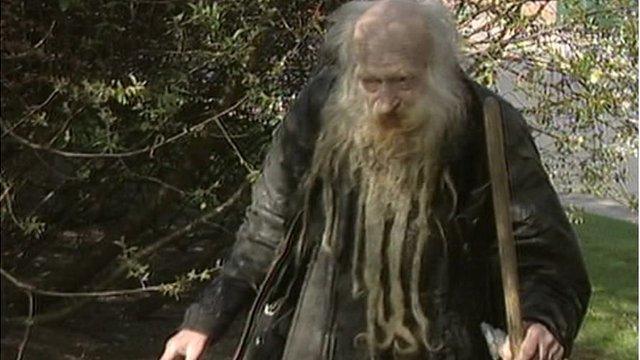Are these the worst ring roads in England?
- Published
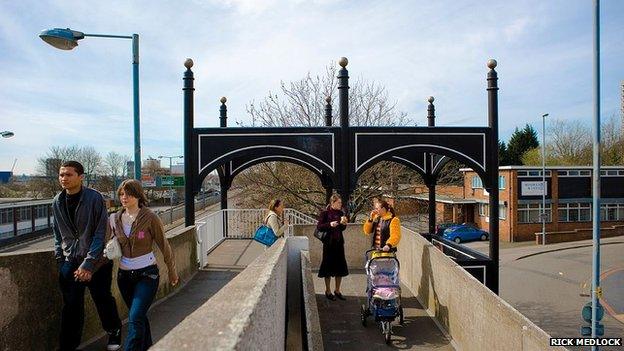
Coventry's ring road quite literally divides the city, according to residents
Which city's ring road has a section named after Lara Croft? And which ring road's roundabouts prompted a fans' calendar?
Love them or loathe them, ring roads are now an intrinsic part of everyday urban living.
While some bemoan the destruction and confusion caused by the wraparound concrete constructions, others choose to celebrate their idiosyncrasies.
So where are the ring roads we love to hate?
We have listed some below but do you agree with our choices? Send your stories of ring road hell to england@bbc.co.uk with the word "ring road" in the subject line.

Sheffield
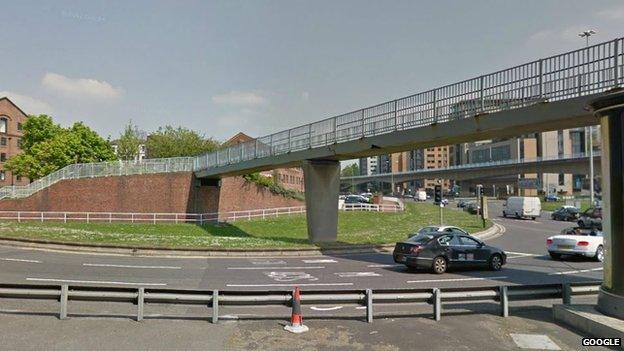
Sheffield's inner ring road: Tormenting drivers since 1961
Driving into Sheffield, I was looking forward to my friend's hen-do.
We had booked a city centre apartment, a spa day and a restaurant. What could go wrong?
Yet, an hour-and-a-half later, I was bellowing tearfully into my mobile at my boyfriend: "You came to university here. Where AM I?"
What had caused this emotional meltdown? Certainly not a fall-out with my friends - I hadn't even seen them yet.
Instead, my fun-filled city break had been spent navigating a series of roundabouts on the city's ring road which kept spitting me out with increasing ferocity.
Sheffield's inner ring road has been tormenting drivers since 1961.
Like many of the nation's worst ring roads, it twists you round its little finger only to catapult you into bus-only zones or roads that lead you off in the opposite direction to the one you need.

Former Top Gear presenter Quentin Willson says bad roads are a 'national scandal'
I'm not the only one who has suffered at the hands of Sheffield's ring road.
Tim Hale, from the city's chamber of commerce, said: "I have lived in Sheffield all my life and even I get confused."
Former Top Gear presenter Quentin Willson believes the poor state of Britain's ring roads is a "national scandal".
"We are in denial about cars in this country," he said. "There is a tacit government policy to discourage people from using roads and get them on to a public transport system that doesn't exist."
His pet ring road hates are London - "the M25 is legendary, while the M40 is perpetually blocked" he says - and Leicester. "Even Sir Ranulph Fiennes was late for a speech in Leicester because he couldn't get off the ring road," he said.

Wolverhampton
Josef Stawinoga lived on Wolverhampton's ring-road for more than 30 years until his death in 2007.
He was a tramp... and they loved him.
The "Wolverhampton ring road tramp" was a homeless man named Josef Stawinoga.
He spent more than 30 years living in a tent on the central reservation of the city's ring-road and ended up attracting a Facebook following of 14,000 people.
He died in 2007 and campaigners are now calling for a statue to be erected in his memory.
"We couldn't approach him and say hello to him because he was always grumpy," said Matthew Hadley, one of his Facebook followers. "But that's what we liked about him."
Sadly, in the view of many, Mr Stawinoga, known as "Fred", was the best thing about Wolverhampton's ring road.
Samuel Brandt, from the University of Chicago, has written a thesis about the ring road. He said the route famously took 26 years to complete.
"It was a protracted and, at times, painful process," he said. "By the time it was completed in the late '80s, its faults and obsolescence were already becoming apparent."

Redditch

Comedian Jasper Carrott joked it was easier to get to Bromsgrove than Redditch from the Redditch ring road
The ring roads that send you off to a different destination entirely are the subject of a Jasper Carrott joke.
Of the notorious Redditch ring road, the West Midlands comedian said: "All the signs lead to Bromsgrove, and I don't want to go there again."
According to driving instructor Andy Bennett, the main problem with Redditch is an overriding sense of déjà vu.
"It's roundabout after roundabout and they all look the same," he said. "You turn a corner and you think, 'I've just been here'. It all looks exactly the same and it's very confusing."
However, the roundabouts of Redditch also spark some affection in the town.
In 2002, Redditch company BB Print Digital turned photographs of the ring road's roundabouts into a surprise hit by publishing them in a calendar, external.
"I see Redditch's roundabouts as an oasis in a sea of asphalt," said Kevin Beresford, who headed the company and now runs the Roundabout Appreciation Society.

Derby

Derby's ring road has a section named after Lara Croft - but can easily send you hurtling towards Nottingham
One wrong turn in your drive around Derby could send you hurtling off towards Nottingham.
"It can be quite confusing," said Chris Woodward, from the campaign group Derby Heart, who fought plans to extend the ring road.
"People have trouble finding our house because the access road was severed by the building of the ring road."
Like other ring roads, such as Leicester's, Mr Woodward said the Derby route changed the character of the historic heart of the city.
"A lot of historic buildings and green spaces were lost when they built it," he said.
"I'm not sure it actually improves the flow of the traffic because there are so many lights and roundabouts that hold people up."
However, the Derby ring road does have one unique feature: a section named after video game heroine Lara Croft, external, whose character was created in the city.
"The city council did an online survey asking people to suggest names for part of the ring road. It somehow went viral and lots of Lara Croft fans voted, so that's what we've got," said Mr Woodward.

Stoke-on-Trent
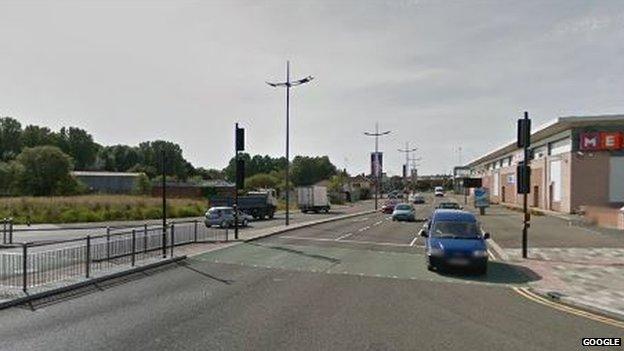
The ring road in Stoke-on-Trent has a section missing
Several towns have ring roads that time - or perhaps developers - forgot.
The Stoke-on-Trent ring road has been "in development" since 2002 - and it is still not finished.
The Potteries Way was due to have been completed by 2011, with the final link in the chain being provided by a private company.
However, the firm went into receivership, leaving Stoke with a missing section.
Pat Field owns Rockerman's Furniture shop, which suddenly found itself cut adrift by the ring road development.
"When they built it, a lot of people couldn't cope with not being able to get to things the way they always have - they didn't know how to find us any more," he said.
"It's bisected a street and left us isolated and the bit where the road doesn't connect is very confusing for a lot of people."

Coventry
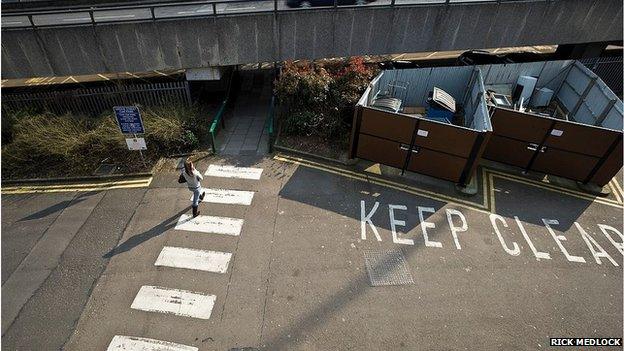
Coventry's ring road - one of the first to be planned in the UK - is raised above the city on stilts
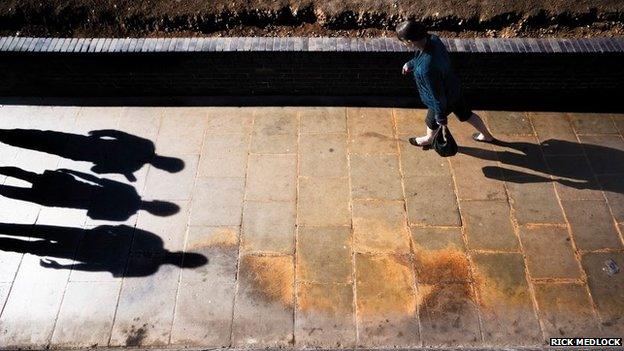
However, some residents feel it isolates the city centre
Coventry's ring road circles the city on concrete stilts.
"You either love it or hate it," said Rick Medlock, who lives in the city and has won awards for his photographs of the road.
"Most people who come here for the first time find it really confusing. It's like a ring of concrete that isolates the city centre. And you have to walk under it if you want to get into Coventry.
"I know one woman who hasn't been in to the city centre for eight years. She doesn't like driving on the ring road and she doesn't feel safe walking underneath it."

London
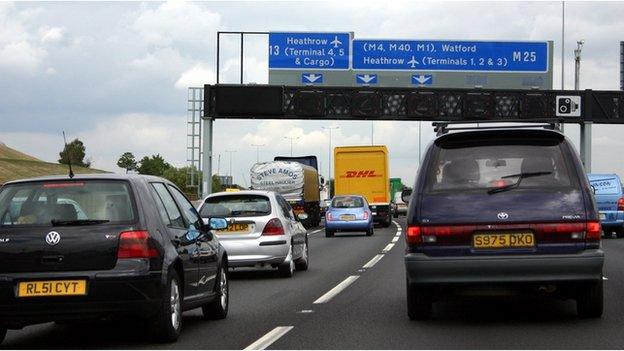
Ring roads around major cities, such as London, can suffer from congestion
The main issue with big city ring roads, such as London's M25 and north and south circular, is congestion.
"The south circular is still a myriad of local roads," said Paul Watters, head of roads policy with the AA.
"The air quality is awful," added Steve Chambers, from Hornchurch, who is doing a PhD in urban planning.
"It's polluted, the infrastructure is really poor and the traffic signals are awful. It's a really, really horrible environment, not just for cars but for cyclists and pedestrians too."

Birmingham
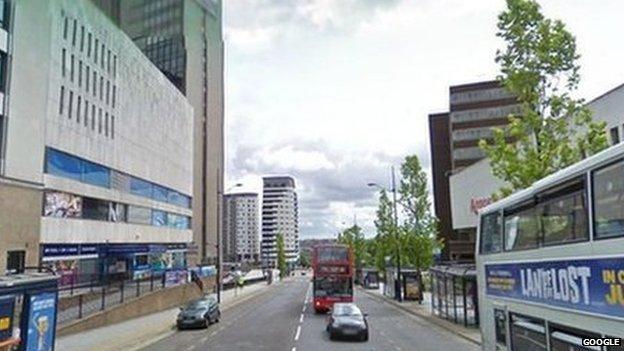
Maurice Abney-Hastings hates Birmingham's Queensway so much, he is campaigning to stop people going into the city
One of the country's most controversial ring roads was Birmingham's Queensway - or the concrete collar, as it was otherwise known.
It was been described by author Stephen Bayley as, "a nightmare: you shot past your ring road junction only to be condemned to another circuit of an idealist's hell".
The ring road was subsequently broken up but many drivers would insist Queensway remains a nightmare - not least those who have fallen victim to the city council's "confusing" bus lane signs.
One of those drivers, Maurice Abney-Hastings, from Alcester, was fined £180 for mistakenly driving into a bus lane.
He says driving on the road is so traumatic, he is campaigning to prevent people from going into Birmingham.
"I have been going around telling everybody not to go there," he said. "I think I have done the city out of at least as much money as it has fined me. My friends have all been going shopping in Leicester, instead of Birmingham."
John Howells, a regional manager with the Road Haulage Association, said many ring roads suffer from problems with signage.
"If you take the wrong exit, you often can't drive across cities any more, so you need to find your way out again which can be difficult," he said.
"Where ring roads work, they take traffic out of town centres. But there are too many routes that were drawn up in the 1960s and '70s, where the concept was good, but funding ran out during construction."
The roads may even become obsolete some day, experts believe, if petrol price rises and concerns about carbon emissions force people to make lifestyle changes.
Samuel Brandt, who studies Britain's ring roads, said: "British ring roads as we know them could well see their final day. However, what I think is more lasting is the idea of a city centre being ringed, whether it be by a road, a moat or a wall."
- Published21 February 2012

- Published7 February 2014
